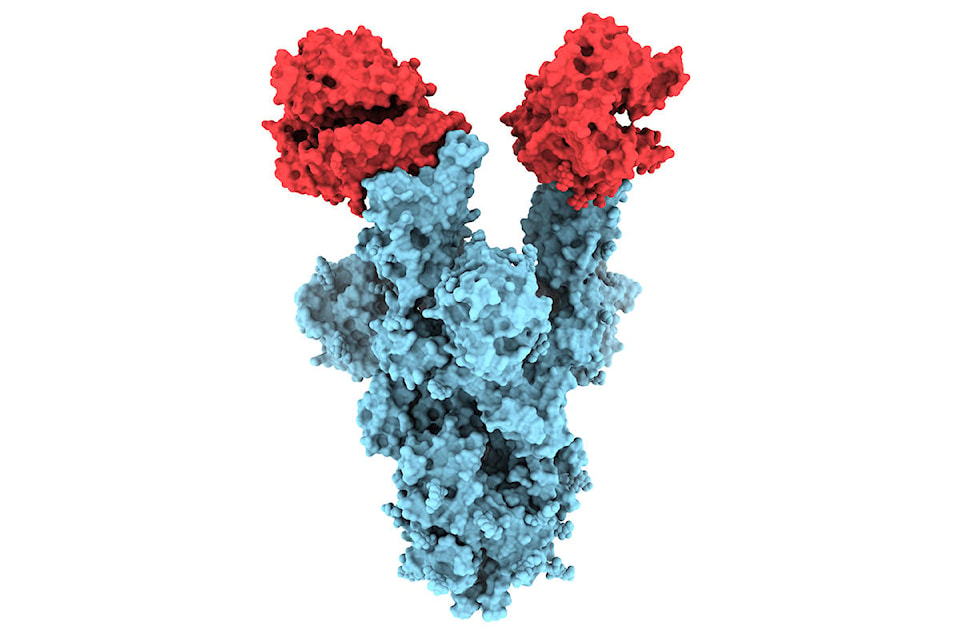Researchers at the University of B.C. have created their image of a mutation on the SARS-CoV-2 spike protein that they believe is partly responsible for the B.1.1.7 variant.
The variant, known as the U.K. variant, has begun to make up the majority of new COVID-19 cases both in B.C. and around the country. According to federal data, there have been 4,039 cases of the B.1.1.7 variant in B.C. as of May 3.
The images were taken at a near-atomic resolution with a cryo-electron microscope – essentially, the imaging of samples at liquid nitrogen temperatures – and can provide information on why the variant is spreading so fast, according to Dr. Sriram Subramaniam, professor in UBC faculty of medicine’s department of biochemistry and molecular biology.
“The B.1.1.7 variant of concern, which was first reported to the World Health Organization in mid-December 2020, has an unusually large number of mutations,” Subramaniam said. “Of particular interest is a mutation known as N501Y located on the virus’s spike protein, which is what the virus uses to attach itself to human cells.”
That N501Y mutation is the only mutation in the B.1.1.7 variant located on the portion of the spike protein that binds to the human ACE2 receptor, which is the enzyme on the surface of our cells that serves as the entry gate for SARS-CoV-2.
The question is, will existing COVID-19 vaccines – given to more than 40 per cent of British Columbians – remain effective in the face of the variant?
“Our analysis revealed that even though the N501Y mutant can bind and enter our cells more readily, it can still be neutralized by antibodies that block the entry of the unmutated version of the virus into cells,” Subramaniam said, adding that he is also examining other variants, including the P.1 (Brazilian), B.1.351 (South African), B.1.427/B.1.429(Californian) and B.1.617 (Indian) variants.
“It’s important to understand the different molecular structures of these emerging variants to determine whether they’ll respond to existing treatments and vaccines and ultimately find ways to control their spread more effectively,” he said.
READ MORE: COVID-19 modelling shows B.C. bending the curve of variant cases
READ MORE: ‘Perfect storm’ of variants, increasing COVID cases are concerning for Surrey fire chief
